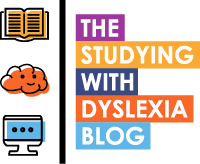Autistic girls often mask their differences, leading to missed diagnoses and misunderstood behaviours. While they may seem calm at school, many experience emotional overwhelm at home. Creating safe, predictable environments—using tools like emotion charts or visual check-ins—helps reduce masking and builds trust.
Girls may appear shy or avoidant, not due to disinterest, but as a coping strategy. Supporting them through drawing, writing, or digital platforms respects their communication preferences and reduces social pressure.
Perfectionism and fear of failure are common. These girls may avoid tasks where success isn’t certain. Adults can model self-compassion and praise effort, promoting resilience through a growth mindset.
Anxiety is prevalent, often presenting as worry, withdrawal, or physical complaints. Grounding strategies, sensory tools, and visual schedules restore a sense of control and calm. Emotional sensitivity also runs deep; gentle, strength-based feedback can prevent internalised distress.
Many have a strong sense of justice and struggle when rules are broken. Teaching perspective-taking fosters flexibility without dismissing their values.
Praise and attention can feel overwhelming. Quiet encouragement and respecting autonomy build confidence without added pressure. Special interests can be powerful motivators—integrating them into learning supports engagement and self-esteem.
Post-masking fatigue is real. Scheduled downtime and teaching self-advocacy helps girls manage their energy and emotional wellbeing. Likewise, honouring their need for solitude while offering optional social opportunities creates a healthy balance.
Difficulty with social cues is common. Direct, judgement-free teaching benefits all children. And while intense interests may dominate, setting gentle boundaries supports connection and reciprocity without discouraging passion.
Girls on the autistic spectrum may internalise challenges more than externalise them. This means that their struggles can go unseen unless we look closer. When we move away from assumptions based on male-centric models of autism and truly listen to what girls are showing us, we can respond with the support they deserve.
Thank you for reading! If you found this article helpful and want to stay updated with the latest insights on dyslexia and neurodiversity, please sign up for our newsletter. To support our work and help us keep the blog running, consider supporting the blog by clicking here.
